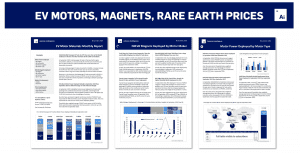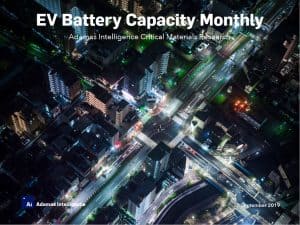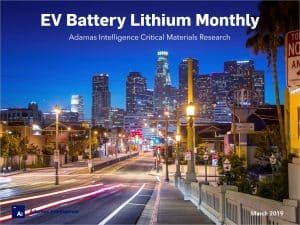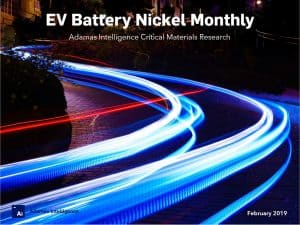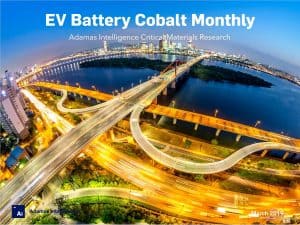Why CATL’s Na-ion Battery is Not a Major Threat to the Lithium Industry
Implications of CATL’s New Battery Type
Earlier this month Adamas Intelligence spoke with Reuters about the implications of CATL’s newly-unveiled sodium-ion (“Na-ion”) battery for the lithium industry.
Our take: Not a major threat.
Too little too late for a major dent in the passenger EV space
While the 160 Wh/kg cell energy density cited is interestingly close to current generation LFP, CATL doesn’t plan to start commercial production until 2023 (meaning no major scale until 2025/26), during which time incumbent chemistries are poised see advances that will make Na-ion less attractive for the wider passenger EV market.
For example, Gotion plans to release a new LFP cell in 2022 with energy density of 260 Wh/kg, comparable to that of Panasonic’s current generation of NCA cells. Similarly, CATL’s latest generation of NCM 8-Series pouch cells are pushing 300 Wh/kg with potential to lift that closer to 350 Wh/kg with increased silicon doping of the anode.
Going forward, CATL sees potential to boost its Na-ion cell density to 200 Wh/kg, keeping on heels of advances in LFP. However, Adamas expects LFP to represent at most just 30% of the global passenger EV market by 2035 (by GWh installed) leaving Na-ion competing for a relatively small share of the passenger EV market – one dominated by low-cost, low-range urban EVs and buses.
Sodium-ion is well-suited for low-cost urban EVs as well as light commercial vehicles and passenger buses
As a low-cost, rapid-charging, long-lasting and safe alternative to comparable Li-ion cells, Na-ion cells are well-suited for use in small, low-priced, low-range urban EVs like the Wuling Hongguang Mini, Renault Zoe, or Tesla Model 3 SR, among others. This segment of the passenger EV market has relatively small battery packs, on average, making it a relatively small piece of the battery market by watt-hours installed, despite strong EV sales growth.
Furthermore, with an ability to charge to 80% state of charge (“SOC”) in just 15 minutes, CATL’s Na-ion cells are also very well-suited for use is passenger EV buses, which currently use LFP cells almost exclusively, as well as light commercial EVs. Both vehicle types frequently return to a central location throughout the day – be it a bus station or parcel distribution center – where charging can take place while loading up.
Lastly, in a future with likely lithium supply constraints, Na-ion can help make available more lithium for solid state cells
With solid state cells and platforms continuing to advance towards commercialization, the adoption of Na-ion at the lower end of the passenger EV market (i.e., low-cost urban EVs) can help free up more lithium supplies for solid state cells using lithium anodes.
For example, Solid Power has developed a cell technology platform that pairs a solid electrolyte with a conventional Li-ion cathode and lithium metal anode, necessitating (we expect) more lithium per kWh than a conventional Li-ion cell.

More Data and Insights from Adamas Intelligence
Must-have intelligence for automakers, cell suppliers, battery materials manufacturers, miners, explorers, investors and other stakeholders with a professional interest in the EV, battery and battery materials industries.
We offer a number of interactive data tools and subscription-based reports for clients seeking regular updates, analysis, and insights into the fast-moving markets and supply chains that we cover.
EV Battery Capacity and Battery Metals Tracker
Building on ongoing EV registrations in over 80 countries, our web-based platform helps users track monthly deployment of battery metals and materials, battery capacity, and the ever-evolving competitive landscapes of battery chemistries and cell suppliers.
The tracker’s intuitive user interface and interactive charts and filters let users quickly zoom in on specific regions, countries, automakers, models, cell suppliers, battery chemistries, battery materials and more.
Subscription includes access to the online platform plus a wealth of Excel data, all updated monthly.
EV Motor Materials Monthly
Our new ‘EV Motor Materials Monthly’ is a subscription-based report and data service for tracking motor demand, NdFeB magnet demand, and other key developments in the global EV traction motor market month-after-month, as they happen; by region, country, motor type, EV type, EV make, EV model and motor supplier, plus the latest developments in rare earth and NdFeB alloy prices.
Every report contains a detailed snapshot of the latest monthly market data, plus an additional 12 months of historical data for context and comparison. All reported monthly data available to subscribers in Excel format.
EV Battery Capacity Monthly
Our ‘EV Battery Capacity Monthly’ is a subscription-based report and data service for tracking monthly deployment of battery capacity (in MWh) in passenger EV batteries by country, region, EV make, EV model, cell supplier, cell chemistry, EV type and more.
Every report contains a detailed snapshot of the latest monthly market data, plus an additional 12 months of historical data for context and comparison. All reported monthly data available to subscribers in Excel format.
EV Battery Lithium Monthly
Our ‘EV Battery Lithium Monthly’ is a subscription-based report and data service for tracking monthly deployment of lithium in passenger EV batteries by country, region, EV make, EV model, cell supplier, cell chemistry, EV type and more.
Every report contains a detailed snapshot of the latest monthly market data, plus an additional 12 months of historical data for context and comparison. All reported monthly data available to subscribers in Excel format.
EV Battery Nickel Monthly
Our ‘EV Battery Nickel Monthly’ is a subscription-based report and data service for tracking monthly deployment of nickel in passenger EV batteries by country, region, EV make, EV model, cell supplier, cell chemistry, EV type and more.
Every report contains a detailed snapshot of the latest monthly market data, plus an additional 12 months of historical data for context and comparison. All reported monthly data available to subscribers in Excel format.
EV Battery Cobalt Monthly
Our ‘EV Battery Cobalt Monthly’ is a subscription-based report and data service for tracking monthly deployment of cobalt in passenger EV batteries by country, region, EV make, EV model, cell supplier, cell chemistry, EV type and more.
Every report contains a detailed snapshot of the latest monthly market data, plus an additional 12 months of historical data for context and comparison. All reported monthly data available to subscribers in Excel format.
Back to overview



